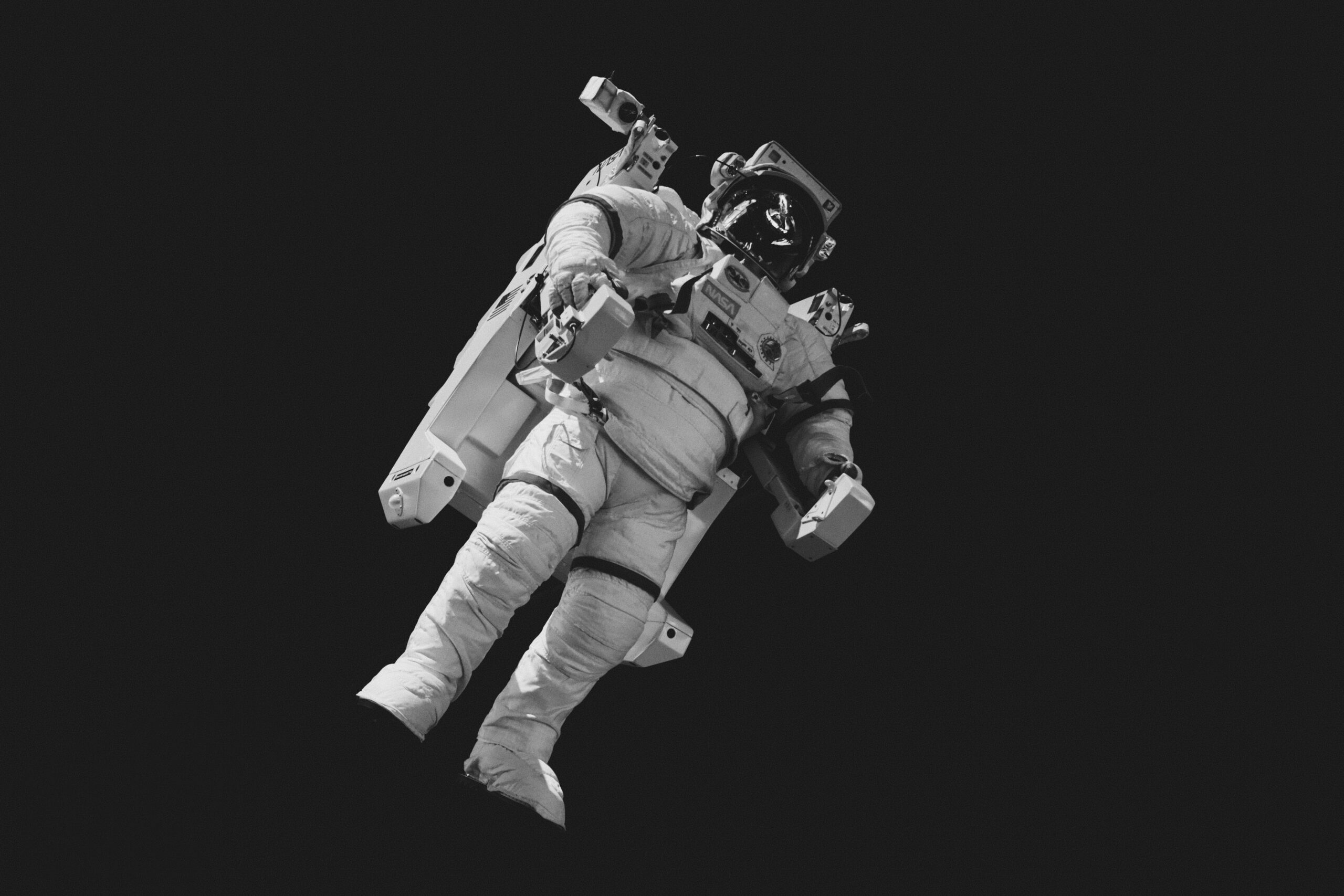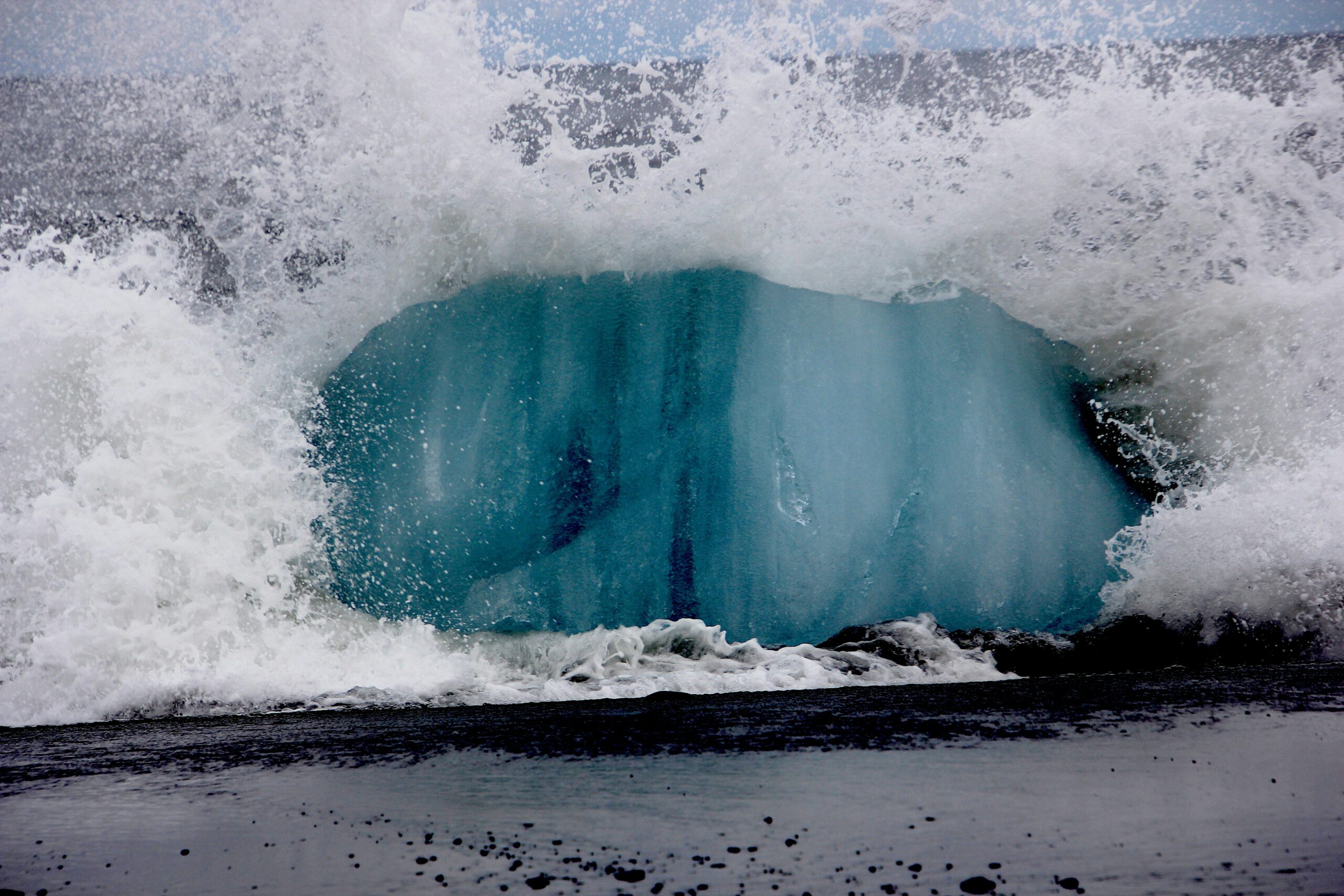“`html
Introduction to NASA’s Mars Simulation
NASA’s commitment to pioneering space exploration culminates in forward-looking initiatives such as the ultra-realistic Mars isolation study. The rationale behind this groundbreaking simulation is rooted in the exigencies of preparing for future manned missions to the Red Planet. With the eventual goal of human habitation on Mars, NASA aims to understand the myriad challenges that astronauts may face during prolonged space travel and extended stays on another planet.
The Mars simulation study encapsulates a multi-faceted approach, addressing both the psychological and physiological effects of isolation and confinement. Among the primary objectives is to gauge participants’ response to prolonged periods of limited social interaction, restricted mobility, and the rigors of a Martian-like environment. Such insights are pivotal for formulating strategies to mitigate potential risks and ensuring the mental well-being of astronauts during missions that could extend beyond a year.
Key milestones in the study include the initial phase of habitat familiarization, wherein participants acclimate to their new living environment. This is followed by a series of meticulously planned stress-inducing scenarios, ranging from emergency drills to simulated technical failures. Each milestone serves to test the resilience, problem-solving capabilities, and teamwork dynamics of the participants, providing critical data for refining mission protocols.
The scientific hypotheses driving this ambitious experiment pivot on a few core questions: How do humans adapt, both mentally and physically, to prolonged isolation? What are the impacts on cognitive function and group dynamics? And importantly, what interventions can be developed to support astronaut health and productivity over extended missions? The results from this Mars simulation are expected to deliver invaluable insights, not just for Mars exploration, but potentially for long-term habitation on other celestial bodies as well.
The Habitat Setup
The Mars simulation habitat, meticulously designed to replicate possible living conditions on the Red Planet, is a marvel of engineering and human ingenuity. Measuring approximately 1,700 square feet, the structure is an impressive feat, offering both functionality and a semblance of comfort. The habitat is compartmentalized into several key areas, including private sleeping quarters, a communal kitchen, a laboratory for scientific research, and recreational spaces. Each section is critical in maintaining the psychological well-being and productivity of the crew over extended periods.
One of the standout features of this habitat is its advanced life support systems. These systems are designed to closely emulate Martian environmental conditions. An intricate network of air filtration and water recycling units ensures that essential resources are efficiently managed. The habitat employs a robust oxygen generation system, capable of maintaining breathable air levels similar to those on Earth, despite the hypothetical challenges of a thin Martian atmosphere. Additionally, waste management systems are engineered to minimize contamination risks, reflecting the stringent requirements for sustainability in an isolated environment.
Replicating Martian gravity poses one of the most significant challenges. While the habitat can’t perfectly mimic the reduced gravity of Mars (approximately 38% of Earth’s gravity), the simulation includes regular exercises utilizing specialized equipment designed to offset the effects of prolonged exposure to lower gravity environments. These exercises are crucial for maintaining muscle mass and overall physical health.
Radiation exposure is another critical concern. On Mars, the lack of a protective atmosphere exposes occupants to higher levels of cosmic radiation. To address this, the habitat is equipped with advanced shielding materials and radiation detection systems. These safety measures are constantly evaluated to ensure the health and safety of the crew.
In terms of atmospheric conditions, the habitat’s climate control systems maintain a stable temperature and humidity level, closely mimicking what would be expected in a controlled Martian colony. This comprehensive approach to habitat design enables researchers to study the intricate balance required to sustain human life on Mars, making each element a pivotal aspect of this ambitious simulation.
The Crew
NASA’s ultra-realistic isolation study simulating life on Mars is populated by a meticulously selected crew, whose diverse backgrounds and expertise are pivotal for the success of this ambitious endeavor. The multi-disciplinary team comprises scientists, engineers, medical professionals, and specialists in various fields that are crucial for sustaining human life in an extraterrestrial environment.
To qualify for this study, candidates underwent a rigorous selection process designed to mirror the challenges of a real Mars mission. This comprehensive evaluation included psychological assessments to evaluate stress tolerance, collaboration skills, and adaptability, ensuring that crew members could endure prolonged isolation and confinement. Among the participants are seasoned astronauts who bring a wealth of spaceflight experience, biomedical engineers who can manage health crises, and geologists whose expertise will be critical for Martian terrain exploration.
The physical criteria were equally stringent. Prospective crew members faced extensive health screenings to ensure they could endure multiple months in an enclosed habitat without developing chronic ailments. Fitness levels were rigorously tested, given the necessity for physical resilience in a low-gravity environment. The diversity of the crew not only enriches the study with varied perspectives but also simulates the multicultural teams likely to undertake real Mars missions.
The diversity extends beyond professional expertise to include cultural and gender variety, thereby ensuring a holistic understanding of group dynamics in long-term space missions. This range of backgrounds enables the study to simulate realistic mission scenarios and prepare for the interpersonal dynamics that will undoubtedly emerge. Their combined skill sets and resilience make this team an exemplary model for future Mars expeditions, contributing significantly to the robustness and credibility of NASA’s isolation study.
Daily Life and Responsibilities
The crew members participating in NASA’s ultra-realistic isolation study follow meticulously structured daily routines designed to simulate the rigors of a real Mars mission. Each day commences with a briefing session, where the team reviews the day’s agenda, addressing tasks ranging from scientific experiments to maintenance duties. These schedules are strategically designed to replicate the operational tempo astronauts would encounter on an actual Martian expedition.
The core of their daily responsibilities revolves around scientific research. Crew members engage in a variety of experiments aimed at understanding the psychological and physiological impacts of prolonged isolation and confinement. These scientific endeavors encompass studies on plant growth in controlled environments, biomedical investigations, and hardware testing – all pivotal for future Mars missions. The experiments are often time-consuming and require meticulous attention to detail, reflecting the precision necessary for conducting research on Mars.
In addition to their research obligations, the crew is responsible for the meticulous maintenance of the habitat. This encompasses routine checks and repairs of life support systems, monitoring of environmental controls, and ensuring the functionality of communication equipment. They are entrusted with the upkeep of the habitat’s infrastructure, reflecting the self-reliance and technical proficiency that will be crucial for survival on Mars.
Resource management forms a significant part of their daily regimen. The crew adheres to strict protocols for managing resources such as food, water, and energy. Conservation strategies are implemented to simulate the limited availability of these vital supplies on Mars. Water recycling systems, rationed food supplies, and energy-saving measures are part of their daily practices, demonstrating how careful resource management is essential for long-duration space missions.
Furthermore, the crew follows a structured exercise regimen, critical for maintaining physical health in the low-gravity environment of Mars. Their day concludes with a debriefing session to review the day’s activities and plan for the next, ensuring continuous communication and adjustment of their operational strategies.
Psychological and Social Dynamics
Extended periods of isolation, such as those faced by participants in NASA’s ultra-realistic Mars isolation study, present unique psychological and social challenges. Understanding these dynamics is crucial to maintaining mental health and ensuring the success of missions. High levels of stress are inevitable in such environments, so adopting effective coping mechanisms is paramount. Crew members employ various techniques to manage stress, including structured routines, regular physical exercise, and personal time for reflection and hobbies. These activities help mitigate the mental toll of confinement and support individual well-being.
Interpersonal dynamics within the confined space can significantly impact overall mission success. Positive relationships and effective communication are essential. To foster a harmonious environment, participants are trained in conflict resolution strategies, emphasizing the importance of empathy, active listening, and problem-solving approaches. Regular team-building exercises and open forums for discussion help address emerging issues before they escalate, fostering a collaborative atmosphere.
Support systems play a crucial role in helping crew members maintain their mental health during extended isolation. Psychological support is provided through remote counseling sessions with mental health professionals, offering an external outlet for discussing concerns and receiving expert guidance. Additionally, the crew is trained to identify signs of psychological distress in themselves and others, creating a vigilant and supportive community.
Maintaining mental health and cohesion among crew members in such a constrained environment is also about individual responsibility. Each participant is encouraged to stay vigilant about their emotional needs and those of their teammates. Implementing regular psychological assessments and peer check-ins ensures that issues are addressed promptly and support is readily available.
Understanding these psychological and social dynamics is essential for planning future long-term space missions, where extended isolation will be the norm. The insights gained from studies like this offer valuable lessons in creating a supportive and resilient crew environment, ensuring that both individual well-being and collective mission goals are achieved.
Scientific Research and Experimentation
One of the primary objectives of NASA’s ultra-realistic isolation study is to simulate the harsh conditions of Mars to advance scientific research and experimentation. During this year-long mission, a multidisciplinary team of researchers conducted a wide array of experiments, encompassing biological, geological, and technological domains. These investigations are crucial for understanding the challenges faced by future Mars missions and developing viable solutions.
In the field of biology, the crew focused on analyzing how prolonged isolation and confined environments affect human physiology and psychology. They utilized advanced biometric monitoring, including wearable technology, to track vital signs, sleep patterns, and stress levels. This data will be invaluable in developing countermeasures to mitigate the adverse effects of long-duration space travel on astronaut health.
Geological experiments aimed at understanding Mars’ terrain better were conducted by simulating Martian soil and rock samples. The team employed remote sensing technologies, similar to those on Mars rovers, to study the geological composition and potential resources on the Red Planet. These experiments provide insights into the extraction of essential materials, crucial for sustainable habitation and in-situ resource utilization on Mars.
On the technological front, numerous innovative tools and methodologies were tested. These include autonomous robotics for maintenance and repair tasks, advanced life support systems, and communication technologies designed to function under the extreme conditions of Mars. One notable achievement was the development of a new artificial intelligence system that can predict and manage equipment failures, thereby ensuring the crew’s safety and the mission’s success.
The isolation study also led to some unique discoveries. For example, the team identified novel microorganisms that can thrive in Martian-like conditions, which could be pivotal for future biotechnological applications. Furthermore, the integration of virtual reality environments proved effective in combating monotony and improving crew morale, providing a more immersive and adaptable training platform for astronauts.
Overall, the comprehensive scientific research and experimentation undertaken during this isolation study not only advances our understanding of Mars’ challenges but also contributes substantially to the foundational work required for future manned missions to the Red Planet.
Challenges and Unexpected Events
The year-long NASA isolation study, an ambitious simulation of life on Mars, was marked by a series of significant challenges and unexpected events that tested the resilience and problem-solving skills of both the crew and mission control. These events provided invaluable insights into the potential realities of an actual Mars mission and underscored the necessity of comprehensive contingency planning.
One of the standout challenges was a critical technical failure involving the habitat’s life support system. Approximately six months into the study, the oxygen generator malfunctioned, significantly reducing the available breathable air. The crew, alongside mission control, had to swiftly diagnose the issue remotely and devise an interim manual solution to maintain acceptable oxygen levels while engineers worked on a permanent fix. This scenario highlighted the importance of having multiple redundancies and robust emergency protocols for life-sustaining systems on Mars.
Health emergencies were another pressing concern during the isolation period. For example, one crew member experienced acute appendicitis, necessitating a simulation of surgical intervention with guidance from remote medical experts. The team successfully managed the situation using onboard medical supplies and telemedicine support, paralleling what would be required on Mars where evacuation to Earth is not an option. This incident stressed the critical need for astronauts to have comprehensive medical training and access to advanced diagnostic and treatment tools within their habitat.
Interpersonal dynamics also posed unexpected challenges, as the psychological strain of long-term isolation became evident. Conflicts arising from prolonged close quarters and limited social interaction required effective conflict resolution strategies. The crew’s ability to maintain cohesive teamwork and communication under stress was bolstered by pre-mission psychological preparation and continuous support from mission psychologists. These experiences reinforce the significance of selecting crews not just for technical expertise but also for their psychological resilience and interpersonal skills.
Through these challenges and their resolution, the NASA isolation study has provided critical lessons in crisis management, system reliability, and crew dynamics. These insights will inform the design and operation of future manned missions to Mars, ensuring better preparedness for the unknowns that lie ahead.
Conclusions and Future Implications
The one-year isolation study conducted by NASA has yielded significant insights, crucial for the planning and execution of future Mars missions. The study’s findings highlight the complexities of prolonged human isolation and its psychological and physical impacts. By closely monitoring and evaluating the participants, NASA has been able to gather essential data on human behavior in closed, confined environments, simulating conditions expected on a Mars mission. These insights are instrumental in shaping the support systems, protocols, and tools required to ensure the well-being of astronauts during extended space travel.
One of the key outcomes of this isolation study is the enhanced understanding of team dynamics and interpersonal relationships under stress. Conflicts, communication breakdowns, and the development of social hierarchies were meticulously studied, offering valuable lessons in conflict resolution and team cohesion. These findings are imperative not just for Mars missions but also for any long-duration space exploration endeavors, including potential lunar bases or missions to other celestial bodies.
Furthermore, the study shed light on the physiological changes experienced during long-term isolation. Changes in sleep patterns, cognitive function, and general health were documented, offering a clearer picture of how the human body adapts (or fails to adapt) to prolonged periods away from natural environments. This knowledge will help refine the design of life-support systems, exercise regimens, and medical interventions needed for future astronauts.
Looking ahead, NASA plans to incorporate these findings into the overall framework of manned missions to Mars. These preparations include the development of enhanced habitat modules that cater to the psychosocial needs of astronauts, advanced medical monitoring systems, and robust conflict management strategies. The broader implications of this study extend to all aspects of space exploration, pushing the boundaries of human capability and adaptability. As NASA moves closer to its goal of a manned Mars mission, this isolation study stands as a cornerstone, informing every step and ensuring that future astronauts are better equipped to face the challenges of interplanetary travel.



